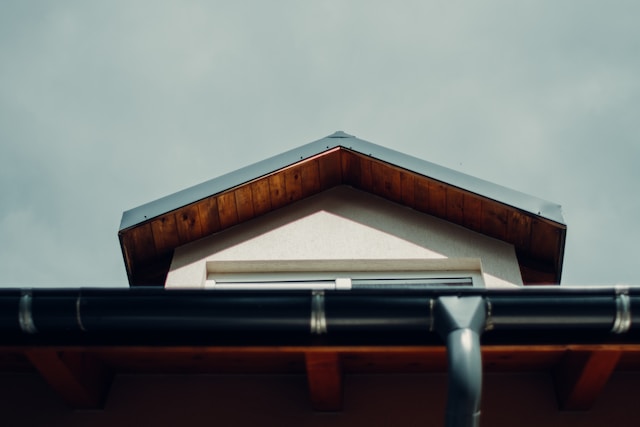Gutters are crucial to your home, protecting its integrity and channeling rainwater away. Outside debris, however, has the potential to clog them and result in water damage to your foundation, siding, and roof.
Gutter guards prevent these problems by removing large debris, reducing maintenance, and saving time. Read on to learn about the options available and how they differ in price, performance, and appearance.
Inverted Curve
Often made of metal, aluminum, or PVC, these gutter guards are installed on top of existing gutters. They allow water to pass through while leaves and debris filter out or are blown away by the wind. They are the most popular gutter guard type and are available at home improvement stores. Avid do-it-yourselfers with a ladder who follow proper safety precautions can install these guards on 1-story houses.
They slide under roofing shingles and work on the principle of surface tension. Unfortunately, heavy rain can force water over the curved edge of these guards and spill onto the ground below. They also aren’t compatible with all roof types and require professional gutter guards Gresham installation. In addition, they can be unsightly and may jeopardize your roofing warranty. They also are expensive compared to other options. The exception to this is if you opt for a metal-framed guard with stainless steel mesh. This is the best gutter protection available, offering superior filtration and durability to other guard types.
Reverse Curve
A reverse curve is among the oldest and most effective gutter guard types. This type of guard uses surface tension to hold onto leaves and other debris, preventing them from entering the gutter.
This type of guard is also one of the most visible. The hood of the reverse curve cover protrudes from the gutter, meaning it’s often visible from the ground or roof. This style of gutter guard is ideal for homes with a more traditional aesthetic.
These gutter covers are typically made from metal and resemble an elongated bottle brush, with bristles extending from the gutter guard’s hood. This type of gutter cover is easy to install and inexpensive. However, it can clog with small debris and be challenging to clean. In addition, it can be challenging to handle heavy rain.
Aluminum
Aluminum is a lightweight metal resistant to corrosion and won’t warp or crack over time. It’s a popular choice for gutter guard frames and screens because it keeps medium-sized debris out of the system while allowing water to flow through. It’s also the best option for homes with many trees because it can keep leaves and other debris from falling out of the gutter system onto your house or lawn.
Stainless steel is an alternative to aluminum and offers more durability and longevity. However, it requires more maintenance to maintain its strength and beauty.
Gutter brushes look like large pipe cleaners and rest inside the gutter’s trough, catching debris and preventing it from flowing over the edges. They can be affordable but tend to clog more frequently than other designs and require more frequent cleaning. They are also not durable in harsh sunlight and may introduce mold or seedling growth.
Perforated
Gutter guards are designed to reduce maintenance, but they don’t eliminate it. You’ll still need to hose down or blow debris off the top of your gutter system occasionally.
Mesh gutter guards, like screen and reverse curve models, block debris from falling into the gutter but allow water to flow through. They’re available in stainless steel and aluminum models and a wide range of color trim options to match the aesthetics of your home’s exterior.
